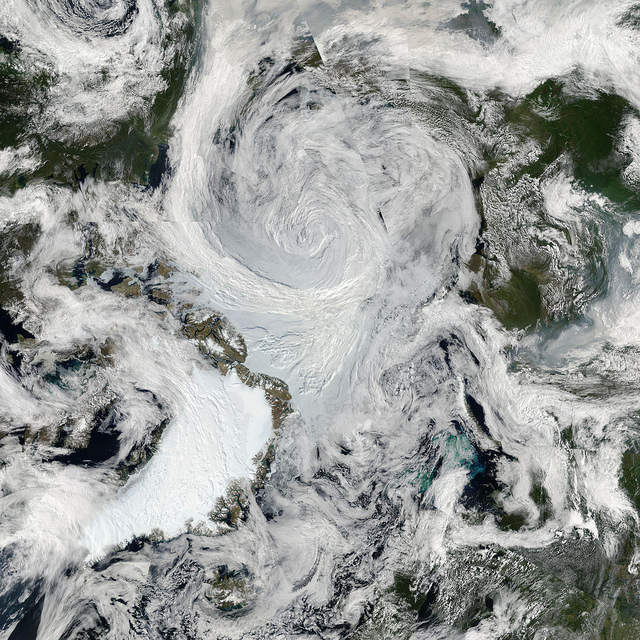 |
| [ click on image to enlarge ] |
Last time a cyclone hit the Arctic, this resulted in a temporary increase in area covered by sea ice, as shown on the Cryosphere Today image below. The cyclone pushed down on the sea ice, flattening it and pushing it sideways.
Note that area as measured by the Cryosphere Today includes all spots that have a 15% or higher concentration of ice. This way of measuring area ignores the fact that the cyclone reduced the sea ice concentration in many spots, from a high sea ice concentration (around 90%) to a lower concentration (less than 80%), as shown on the Naval Research Laboratory image below.
Furthermore, sea ice has since dropped in thickness, as illustrated by the Naval Research Laboratory image below.
Much of the ice is now less than one meter thick, while some areas close to the North Pole have ice that is only between zero and half a meter thick.
The cyclone is raging most fiercely in those areas and much of the ice is drifting out into the Atlantic Ocean.
Neven mentioned at the Arctic Sea Ice Blog that average thickness (crudely calculated by dividing PIOMAS (PI) volume numbers with Cryosphere Today (CT) sea ice area numbers, see image below) had a very steep drop in July, similar to the drop in 2010. This year's trend line is now lowest, probably signifying that the ice pack is spread out and thin at the edges (read: melting potential).
The image below, from the University of Bremen, Germany, shows sea ice concentration on August 11, 2013.
The cyclone is raging most fiercely in those areas and much of the ice is drifting out into the Atlantic Ocean.
Neven mentioned at the Arctic Sea Ice Blog that average thickness (crudely calculated by dividing PIOMAS (PI) volume numbers with Cryosphere Today (CT) sea ice area numbers, see image below) had a very steep drop in July, similar to the drop in 2010. This year's trend line is now lowest, probably signifying that the ice pack is spread out and thin at the edges (read: melting potential).
 |
| [ click on image to enlarge ] |



































